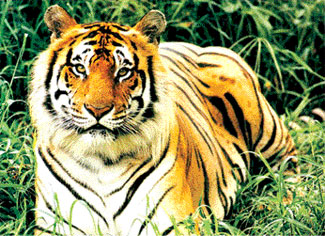|
Scientists have new measure for species
threat
A new index has been developed to help conservationists better
understand how close species are to extinction. The index, developed by
a team of Australian researchers from the University of Adelaide and
James Cook University, is called SAFE (Species Ability to Forestall
Extinction).
The SAFE index builds on previous studies into the minimum population
sizes needed by species to survive in the wild. It measures how close
species are to their minimum viable population size.

"SAFE is a leap forward in how we measure relative threat risk among
species," says co-author Professor Corey Bradshaw, Director of
Ecological Modelling at the University of Adelaide's Environment
Institute.
"The idea is fairly simple -- it's the distance a population is (in
terms of abundance) from its minimum viable population size. While we
provide a formula for working this out, it's more than just a formula --
we've shown that SAFE is the best predictor yet of the vulnerability of
mammal species to extinction."
Professor Bradshaw says SAFE is designed to be an adjunct to the
International Union for Conservation of Nature (IUCN) Red List of
Threatened Species, not a replacement."Our index shows that not all
Critically Endangered species are equal.
A combined approach -- using the IUCN Red List threat categories
together with the SAFE index -- is more informative than the IUCN
categories alone, and provides a good method for gauging the relative
'safety' of a species from extinction," he says.
Of the 95 mammal species considered in the team's analysis, more than
one in five are close to extinction, and more than half of them are at
'tipping points' that could take their populations to the point of no
return.
"For example, our studies show that practitioners of conservation
triage may want to prioritise resources on the Sumatran rhinoceros
instead of the Javan rhinoceros. Both species are Critically Endangered,
but the Sumatran rhino is more likely to be brought back from the brink
of extinction based on its SAFE index," Professor Bradshaw
says.Alternatively, conservationists with limited resources may want to
channel their efforts on saving the tiger, a species that is at the
'tipping point' and could have reasonable chance of survival."
-Science Daily |

